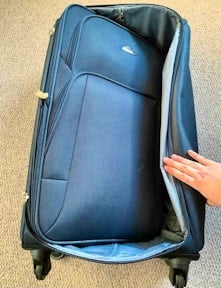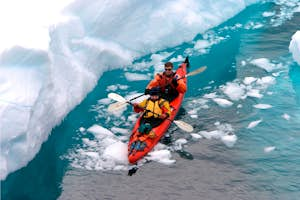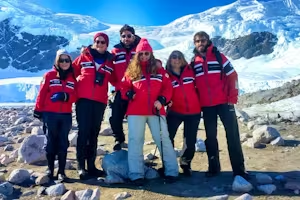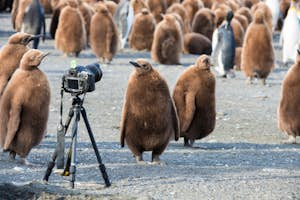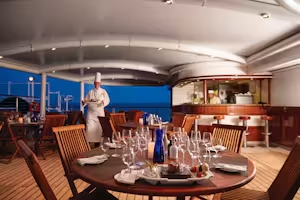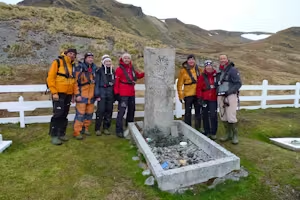Packing for Antarctica
What to wear
While average temperatures on the Antarctic Peninsula during the Austral summer hover around zero degrees, the reality is that the weather can be extremely variable. If the sun is shining, there's no wind and you're hiking uphill, you can find yourself getting very warm and needing to remove layers. However, this can all change in an instant, and the wind picking up can have you shivering in seconds. Zodiac cruising can be particularly chilly, due to the lack of body movement, so we recommend wrapping up extra warm if you're heading out for an hour or two on the water.
Being correctly prepared and having the right gear makes all the difference, particularly on a trip like this, so it’s never too early to start reviewing your kit. The good news is that between the clothing items provided and what you already own, it shouldn't cost you a lot to fill in the gaps for your polar wardrobe. You can even make the sustainable choice of hiring kit for Antarctica.

Swoop says
Pack some clothes in your hand luggage in case your luggage gets lost, then you can still enjoy your expedition. Pop them into a vacuum pack style bag, squeeze the air out and place it in your carry-on. We recommend a waterproof jacket & fleece (if your ship isn't providing them), waterproof trousers, gloves (thick + liner), a hat, a couple of pairs of socks and underwear and a set of base thermals, as well as your photography equipment and binoculars.
Clothing
1. Under layers

Base layers are key to staying warm in Antarctica, both top and bottoms, as they trap air close to your body and can be added or subtracted until you hit a happy medium. As we like to say, 'dress like an onion'.
We recommend you don’t wear cotton, instead choose merino wool, silk or polyester as they retain body heat far better.
On top of one or two base layers, you can then add a fleece layer, before your outer weatherproof jacket. We recommend bringing several different warm layers, whether they be fleeces of varying thicknesses or down-style lightweight liner jackets, so you can layer up according to the weather and activity.
Note: If your ship includes a parka please be aware that some expedition parkas are 3-in-1 jackets with a removable inner quilted jacket, whereas some are outer shells only with no inherent warmth. What is provided in Antarctica will affect what you decide to pack, so if you are not sure if your ship includes a jacket, please check with us.
2. Outer layers

As zodiac rides to and from the ship can get splashy, you will definitely need a weatherproof outer 'shell' comprising both a jacket and waterproof trousers. Many of the ships provide a complimentary outer jacket, which will be waiting for you in your cabin and can be taken home to wear again and again. Some of these are 3-in-1 jackets with a removable inner quilted jacket, whereas some are outer shells only. If you are not sure if your ship includes a jacket, please check with us.
If your ship does not provide a jacket, a decent Gore-Tex or skiing jacket is ideal, which you may well already have. It must be totally waterproof and windproof.
Similarly, for waterproof trousers, skiing trousers/pants work really well and can be layered up with thermal leggings underneath. However, it is important to check that they are completely waterproof, not just snowproof. They will need to go over the top of the rubber boots that most ships provide* (not tucked in, as this directs water run-off straight onto your socks), so a loose ankle is needed.
If you would prefer to avoid investing in outdoor clothing that may see limited use once you're back home, or if you want to travel light without bulky gear, there are convenient clothing hire shops in Ushuaia and Punta Arenas. Rental isn't very expensive but quality can vary, so we recommend using the Swoop-approved New Headings shop.
Renting is generally a practical choice for many travellers – just keep in mind that you may need a little extra time after your cruise to return the items before heading to the airport. If you have a charter flight package, please check with your Customer Experience Coordinator to see if renting is available with your itinerary.
Read more about renting versus buying Antarctic gear in our article.
*If you are travelling on a voyage operated by Silversea or Lindblad you will need to rent these from Ship to Shore.
3. Gloves & socks
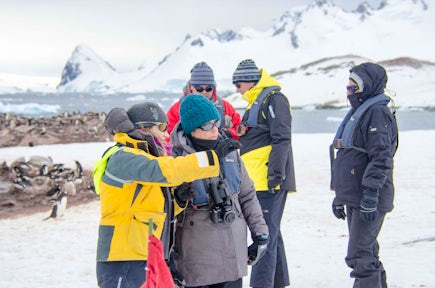
Hands and feet are the first things to get cold when you are out on zodiac excursions, as you are not moving around generating heat and helping blood circulation. There are some excellent "tog-rated" thick thermal socks available nowadays – get them in a ski boot length and these will keep your feet toasty.
For your hands, a pair of waterproof ski-style gloves are a must, and ski mittens are even better for keeping your fingers warm. Of course, these are no good for taking photos, so we recommend a thin pair of liner gloves underneath; silk or those with a touch-sensitive finger pad will allow you to take photos on a phone more easily. If you are using a phone for photos, we strongly recommend using a case that has a loop to secure it around your wrist. Likewise, for cameras, a neckstrap is essential. Zodiac rides can be bumpy and can easily jolt you causing you to lose grip. You may also need to keep your hands free to hold on to the rib.
Also key to warm hands and feet is keeping them dry. Your boots will keep your feet dry, but splashing from the zodiac as you cruise through the icy water may get your gloves wet, so make sure your gloves are either waterproof or bring a pair of rubber gloves to protect them whilst you are cruising around. Fishermen have been doing this for decades. It is worth taking a second pair of gloves to allow for drying time if you do get wet.
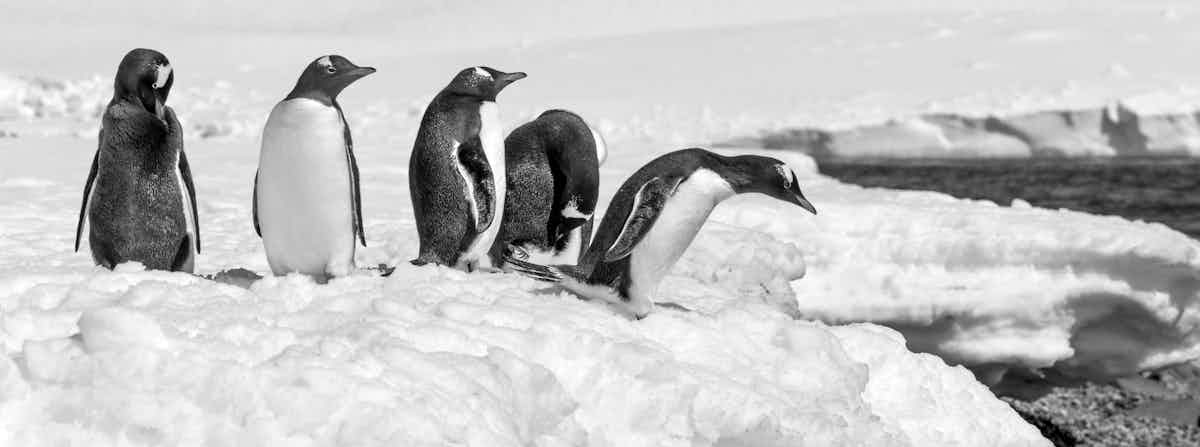
What our customers say about what to wear in Antarctica
Review:
Other important items
Viewing icebergs and wildlife
Taking part in the Polar Plunge!
Walking with penguins, Cuverville
Also, don't forget to pack:
- A lined woolly hat – make sure it can be pulled down to cover your ears from bracing winds
- A foldable wide-brimmed sunhat – useful on hikes when it's a bit too hot for your woolly hat
- UV protective sunglasses, polarised if possible, to combat the reflections from snow and water
- High factor suncream
- Lip balm with SPF
- A buff or neck gaiter
- Your swimwear for the polar plunge!
- A rucksack - we strongly recommend using a fully waterproof dry bag style backpack (with straps) for splashy zodiac rides as your bag will be on the zodiac's floor, and also to keep your hands free while walking on land. (This will allow you to take off and store layers if you start overheating during landings.)
- Camera equipment for taking photos – advice on what to take can be found in our Photography in Antarctica guide
- To observe wildlife, you should bring a good pair of lightweight binoculars (the best degree of magnification is 7 or 8 X 30). Nikon is a really good and affordable brand. Our UK and EU customers have also recommended Opticron binoculars.
- A telescopic walking pole (or poles) with a snow basket on the end, to avoid sinking into the snow, can also be a really useful extra point of balance on the ice. They don’t take up much space in your luggage and are light.
If you are booked to travel on the Seaventure or Island Sky, one walking pole will be provided.
Swoop says
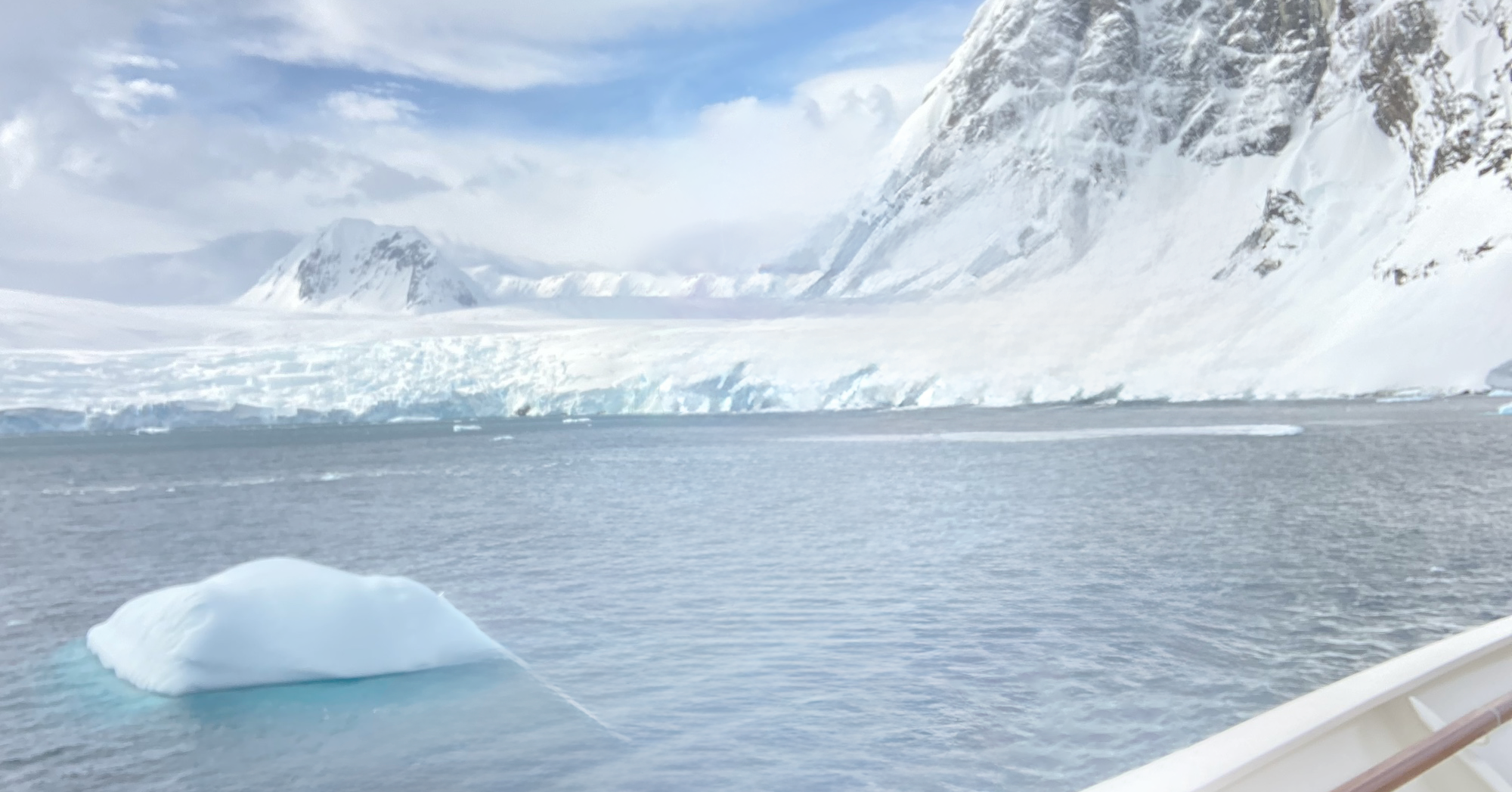
It's essential that your binoculars are waterproof. It's a good idea to go try some out in a shop to work out what is most comfortable, especially with the magnification. If you have shaky hands it can really influence your decision. Also, think about weight – even the most expensive binoculars are no good if you're never wearing them because they're too heavy!
Lizzie Williams Polar Product Manager
What kit will be provided?
Most Antarctic ships provide:
- Rubber insulated boots on loan to guests for the duration of the voyage
- When choosing your rubber boots, we suggest you choose one size larger than usual to take into account the thick socks
- Try on your boots straight away – if they aren't quite right there's always a stock of other sizes, so don’t fret about getting it 100% correct
If you are travelling on a voyage operated by Silversea, please check with your Customer Experience Coordinator to see if boots are provided. If you are travelling with Lindblad you will need to rent these from Ship to Shore.
Quite a few also offer:
- Complimentary parka jackets, often with a high neck to keep out the wind and a zip-in fleece inner layer
- When choosing your parka size, given the added underlayers you’ll be wearing, we suggest you choose one size larger than normal
- Try on your jacket straight away – if it isn't quite right there's always a stock of other sizes, so don’t fret about getting it 100% correct
The details of what clothing will be provided on your own voyage can be found in your original confirmation email which you will have received by email shortly after booking. If in any doubt, please get in touch with your Customer Experience Coordinator.
If you're unsure whether to buy or rent any kit that is not provided on your ship, have a read of our article.

Swoop says
If you're booked onto a charter flight to/from Punta Arenas, don't forget when packing that the baggage allowance is 20kg – this is inclusive of 5kg of hand luggage.
Clothing: FAQs
-
Will I need to bring a winter jacket if a parka is provided?
This depends on whether you’re spending any significant time in Patagonia pre or post-Antarctica. If you’re simply flying into Ushuaia with just one night there before embarking, then a showerproof softshell lined jacket would be ideal to cover you for the morning prior to embarkation. This can later be layered underneath your expedition parka and is useful if you are outdoors on deck for shorter periods.
If you are spending more time than this, or plan to head out into the nearby national park, then a waterproof shell (with a warm layer underneath for chilly/windy days) to protect you from Patagonia’s highly changeable weather would be a good idea. If you are planning to do any hiking or more strenuous activities, you may prefer something more lightweight and packable to the parkas provided by the ship.
Some expedition parkas are 3-in-1 jackets with a removable inner quilted jacket, whereas some are outer shells only. What is provided in Antarctica will affect what you decide to pack for Patagonia, so if you are not sure if a parka or jacket is provided on your voyage, please check with us.
-
What is the typical dress code on board the ship?
The onboard dress code leans very much towards the casual and comfortable, rather than needing to feel that you’re on parade. Unless you’re on one of the more luxurious ships, you can leave your cocktail dress, blazer and tie at home.
Many of the ships may have a Captain's Farewell on the final evening where you have the opportunity to dress up a little if you wish. For ladies a nice top will suffice, gentlemen may opt for a shirt. This is not required but it may be worth packing one marginally smarter outfit – also useful if you're going out to dinner in South America pre-cruise.
People typically dress in a mixture of outdoor/walking attire or whatever they tend to wear at home. Bring what you will be comfortable in, it really isn’t a fashion show and the expedition ships are very ‘dress down’ in approach. The emphasis is on practicality; you need to be able to dash outdoors at a moment's notice to enjoy an impromptu wildlife sighting.
When packing it's worth also bearing in mind:
- All of the ships are kept warm inside. However, we recommend taking a warm outer layer (and your camera) with you at all times. We have often abandoned dinner mid-meal to race outside to see whales!
- The laundry service on all ships is typically very efficient, so you don’t need to bring an excess of clothing for longer cruises. It can be a little expensive for smaller items (socks, underwear) so sometimes guests choose to wash these out in the bathroom.
-
Where would you recommend to buy polar clothing?
Your best bet is to visit a reputable, local outward bound store where you’ll have access to good free advice and can try items on before purchasing. However, if you don’t think you'll use any of the items again after your Antarctic trip, it might be a good idea to rent instead of buying new.
-
Is it worth taking trekking poles?
Yes, definitely, the collapsible poles are ideal and don't take up much space.
Even having just one pole can be really useful as a third point of balance - in Antarctica particularly.
-
Is it worth taking walking boots?
For just Antarctica, they are not necessary. You will be required to wear the neoprene rubber boots (high-grade wellies) that are provided by most operators* for all landings, as you will generally be stepping off onto the beach into ankle-deep water. The rubber boots are also far more suited to walking in snow as they are warm and completely waterproof. These boots are also much easier to scrub down, which everyone must do to remove any penguin muck and maintain biosecurity protocols.
If you're going to South Georgia where the possibilities for longer walks are far greater, particularly the Stromness walk, which is the tail end of Shackleton's route, you may wish to take some comfortable walking shoes – you will still need to wear the rubber boots to get ashore. However, please note that it is not always possible to do this extended hike.
The rubber boots are perfectly comfortable to wear in all other walking scenarios, both in Antarctica and South Georgia. So many passengers (and Swoop staff) stick to the boots.
*If you are travelling on a voyage operated by Silversea or Lindblad you will need to rent these from Ship to Shore.
-
What sort of footwear do we need for the boat?
For life on the ship, flat closed-toe shoes with a good grip are a must for slippery outdoor decks. We suggest a pair of hiking trainers/sneakers – not full hiking boots, but warm and comfortable for standing outside for hours watching the spectacular scenery.
-
Do I need anything different for a land-based trip?
If you are travelling to the Antarctic interior for a land-based experience, please refer to your trip equipment list. These trips require additional equipment for lower temperatures and overnights in camping facilities.
You're likely to need rated snow boots, properly insulated trousers/pants, a parka, a -40C sleeping bag, balaclava, goggles and more. It is possible to rent some clothing and gear (boots, pants, parka & sleeping bag). Before joining your expedition, you will likely need to pass a gear check.
What kind of luggage should I use?
We would recommend you use a soft-sided holdall (ideally with wheels) or suitcase as they are easier to stow in a cupboard or push under your bed. Some ships have dedicated suitcase storage.
